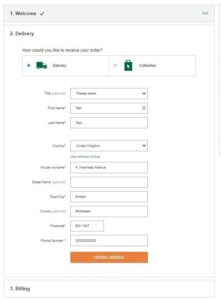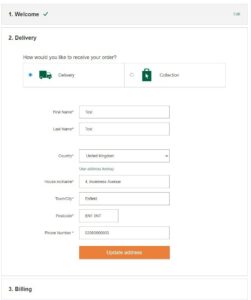Do Shorter Forms Really Convert Better?
By Luke Hardwick
July 23, 2020
Share
One of the most common pieces of advice you hear in optimization is to reduce the number of form fields required for any conversion. Customers don’t like to provide information they perceive as unnecessary, any extra fields within the checkout can give users the impression more effort is required and this can lead to increased drop offs. This UK-based health food and supplies retailer decided to A/B test this piece of advice and see what kind of difference it actually makes.
Do Shorter Forms Really Improve Conversions?
In the original version of the checkout experience, the delivery and billing sections contained the following optional fields:
- Title
- Street Name
- County

In the original form, most users put their entire street address into the “House No. & Name” field, rendering “Street Name” unnecessary. So, rather than requiring an additional field, they decided to keep just the one since it was used most often for this input.
The A/B test version of this form eliminated all of the optional fields across both sections for the delivery and billing addresses.

The results proved that, at least for this brand, a shorter checkout form does improve conversions. Across all devices, purchases with the shorter form increased by over 3%. The impact was even greater on smartphone and tablet, with an increase in conversions of over 5%.
The lift in conversions led to increased Revenue Per User (RPU), with a lift of over 9% across all devices. On smartphones and tablets RPU increased by almost 12%.
To learn more about SiteSpect, visit www.sitespect.com.
Share
Suggested Posts
Subscribe to our blog:





